
How to Remove Burnt Residue from a Stainless Steel Pot
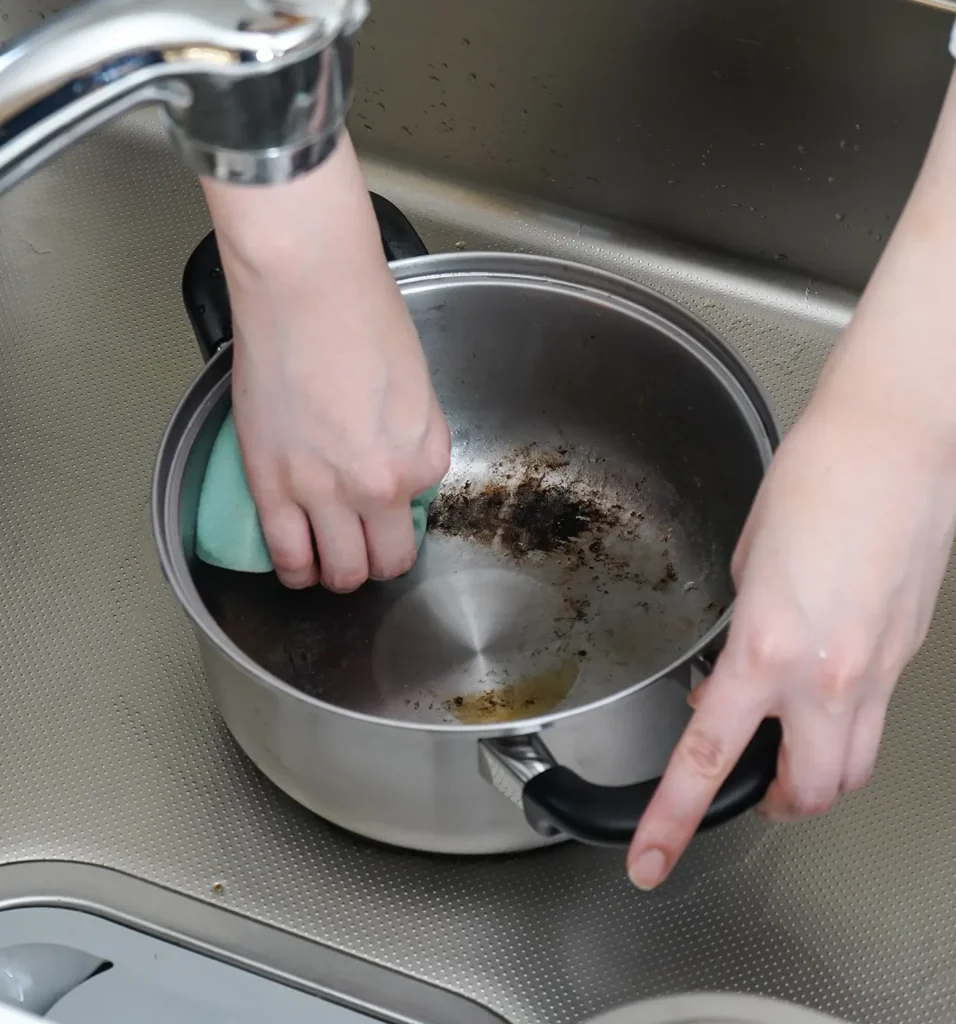
How to Remove Burnt Residue from a
Stainless Steel Pot
Stainless steel pots are known for their excellent resistance to corrosion, heat, and impact. They are durable, hard to break, and highly resistant to rust, making them a hygienic option for cooking. However, there may be times when you accidentally burn food while cooking.
In this article, we will explain how to remove burnt residue from stainless steel pots.
We will also cover how to deal with discoloration, which often occurs with stainless steel cookware.
By learning the correct cleaning methods, we hope you’ll be able to use your stainless steel pots for many years to come.
How to Care for Stainless Steel Pots
For regular care, wash thoroughly using a soft sponge and a mild detergent. After washing, wipe off any moisture and let the pot dry completely. Then store it in a well-ventilated area.
If maintenance is insufficient, trace elements in tap water may remain and cause white stains. However, these stains are harmless to the human body.
Stainless steel is highly resistant to rust, but if stains containing salt or acid are left on the surface, or if the pot is stored in a humid environment, rust may still develop. Additionally, if it is left in contact with dissimilar metals such as iron or aluminum, rust may occur at the contact points. Please avoid such conditions. If rust does appear, scrub it off using a cream cleanser.
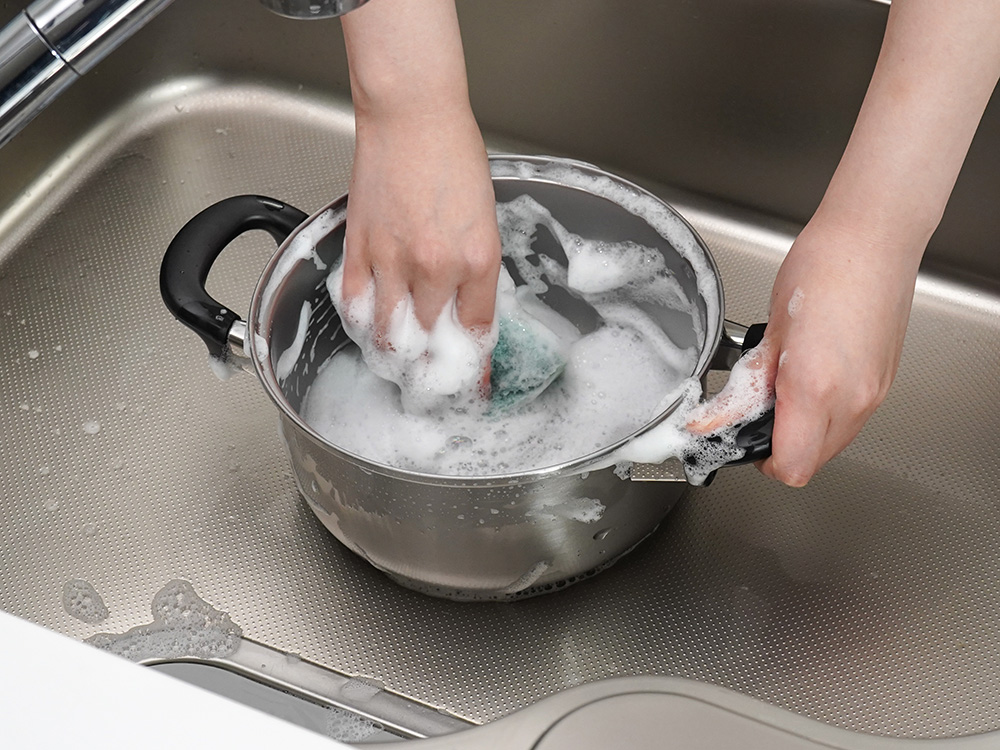
When you wipe the pot with a cloth, black stains appear.
We sometimes receive inquiries stating that wiping a stainless steel pot with a cloth leaves black stains. This black residue is actually an “oxidized film.” Stainless steel naturally forms a thin layer of oxidation on its surface to protect it from rust and corrosion. However, when the pot is rubbed strongly, this film can come off and transfer to the cloth. The oxidized film poses no hygiene concerns, so you can continue using the pot without any problem.
When a stainless steel pot gets burnt
When a stainless steel pot gets burnt, fill it with hot water and let the burnt residue soak to soften it. Then, use a soft sponge or other gentle material to scrub it off.
Do not use hard metal scrubbers, as they can damage the stainless steel surface.
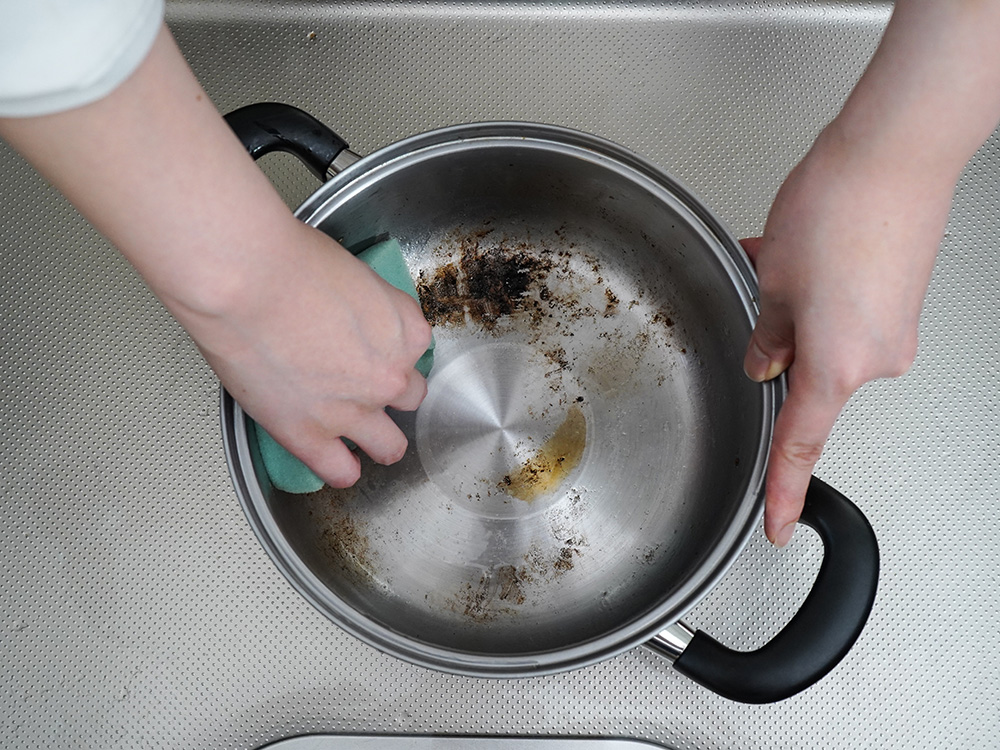
For stubborn burnt-on residue that doesn’t come off even after soaking with hot water, use a cream cleanser to scrub it away.
When using a cream cleanser, we recommend applying it not with a sponge, but with a ball of food-grade plastic wrap.
Sponges tend to absorb the abrasive particles in cream cleansers, which reduces their effectiveness. In contrast, balled-up plastic wrap does not absorb the cleanser, allowing it to work more efficiently to remove burnt residue.
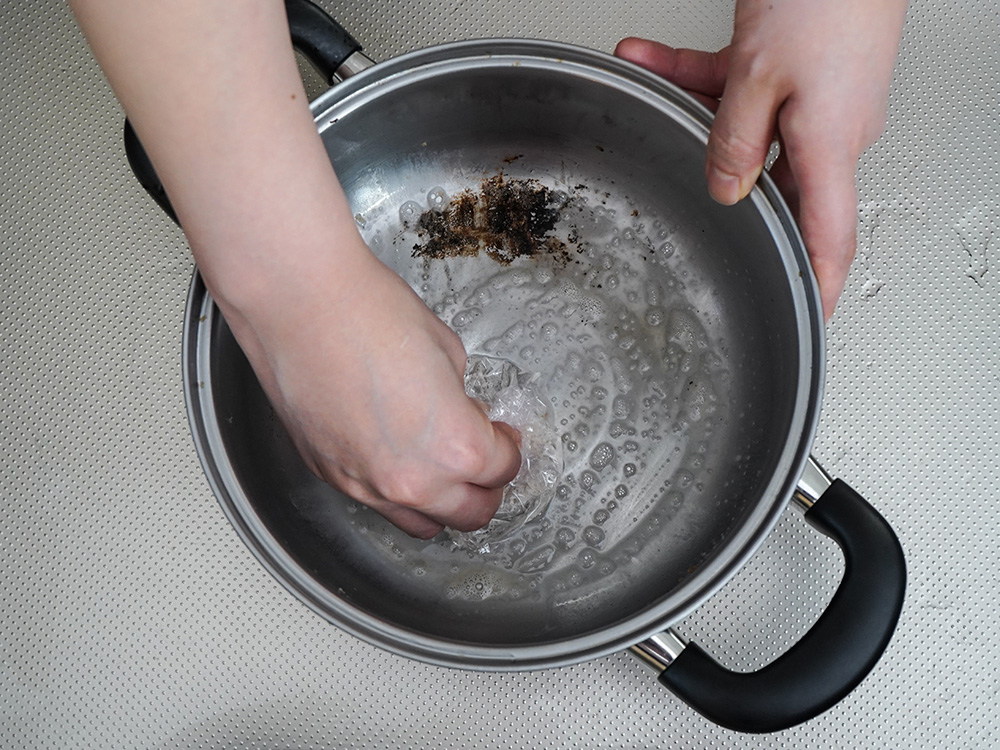
Due to the heat conductivity of the material, stainless steel pots are more prone to burning when used over high heat.
Additionally, using a flame that extends beyond the bottom of the pot can cause the handles to burn.
Please be careful not to use excessive heat when cooking.
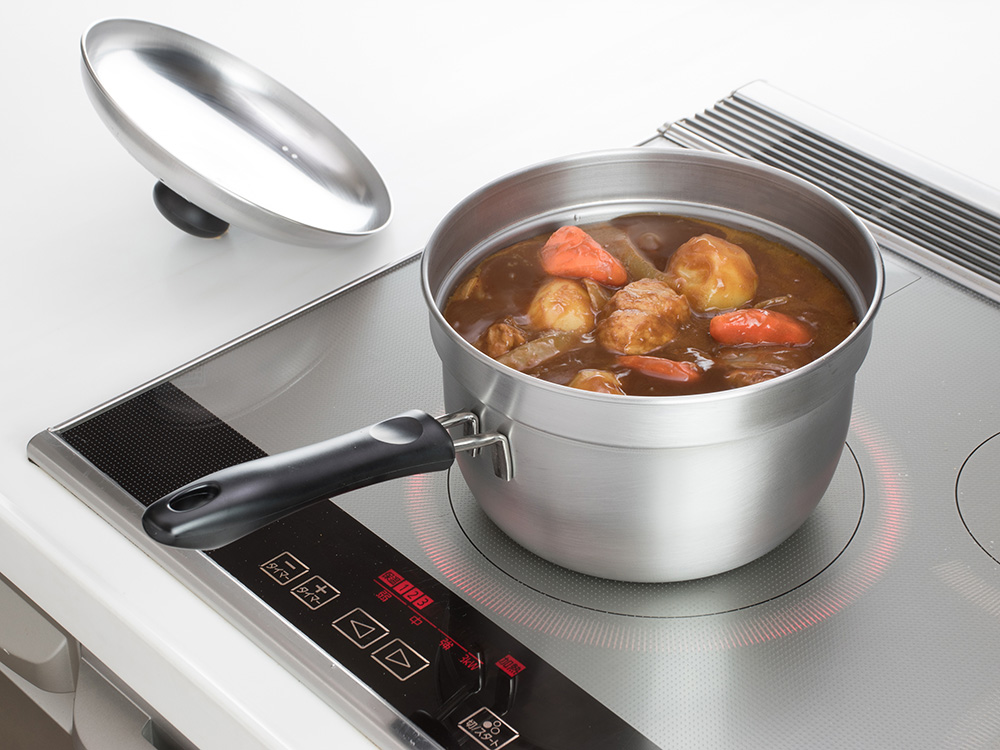
About Discoloration of Stainless Steel Pots
Stainless steel pots may become discolored over time with use.
In this section, we will explain the types of discoloration commonly seen in stainless steel pots and the reasons why they occur.
The inside of the pot has turned dark.
This darkening occurs when tannins, which are naturally present in some foods, react with the iron component in stainless steel.
It is completely harmless and does not present any hygiene or health risks, so you can continue using the pot without worry.
The inside of the pot has become discolored with a rainbow-like tint.
This phenomenon is especially common with new stainless steel pots.
It occurs when ions, iron, or copper contained in water adhere to the pot’s surface as the water evaporates, resulting in a rainbow-colored discoloration.
To remove this discoloration, fill the pot with a solution of 10% citric acid (or vinegar)—a ratio of 10 parts water to 1 part citric acid—and boil it for about 10 minutes.
After turning off the heat, let the solution sit in the pot for about an hour. Then wash the pot with regular dish detergent. This method is effective in removing the discoloration.
We recommend performing this process in a well-ventilated area.
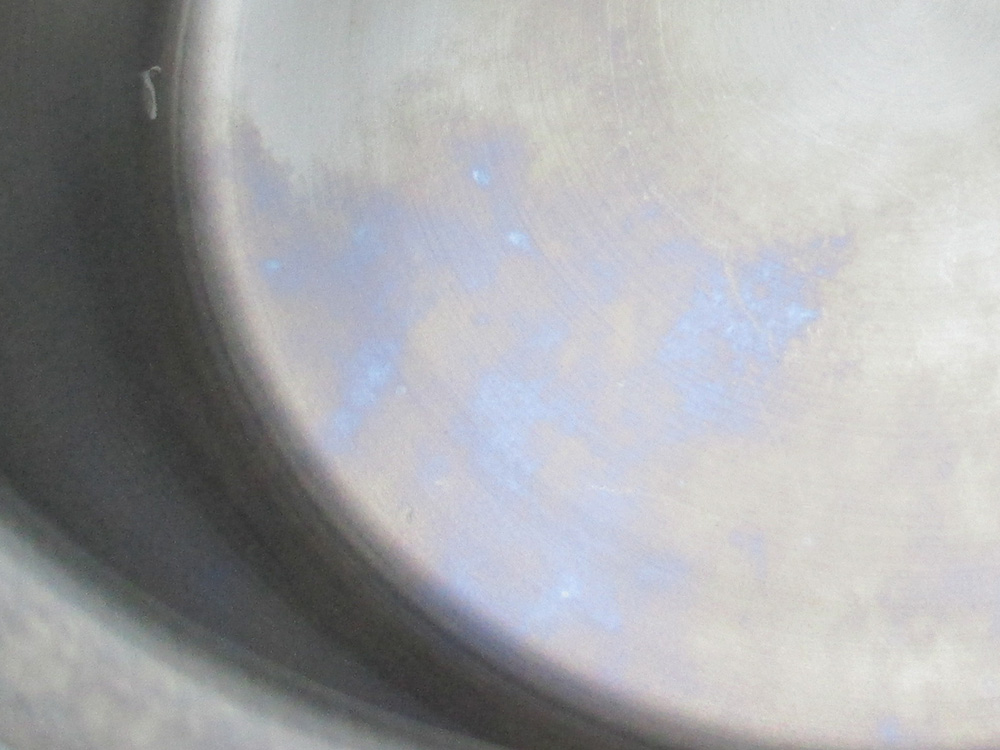
The exterior became discolored after being heated.
Due to the nature of stainless steel, heating can cause the surface oxide layer to discolor from the heat. However, this discoloration does not pose any hygiene issues or health risks, so you can continue using the product without any concerns.
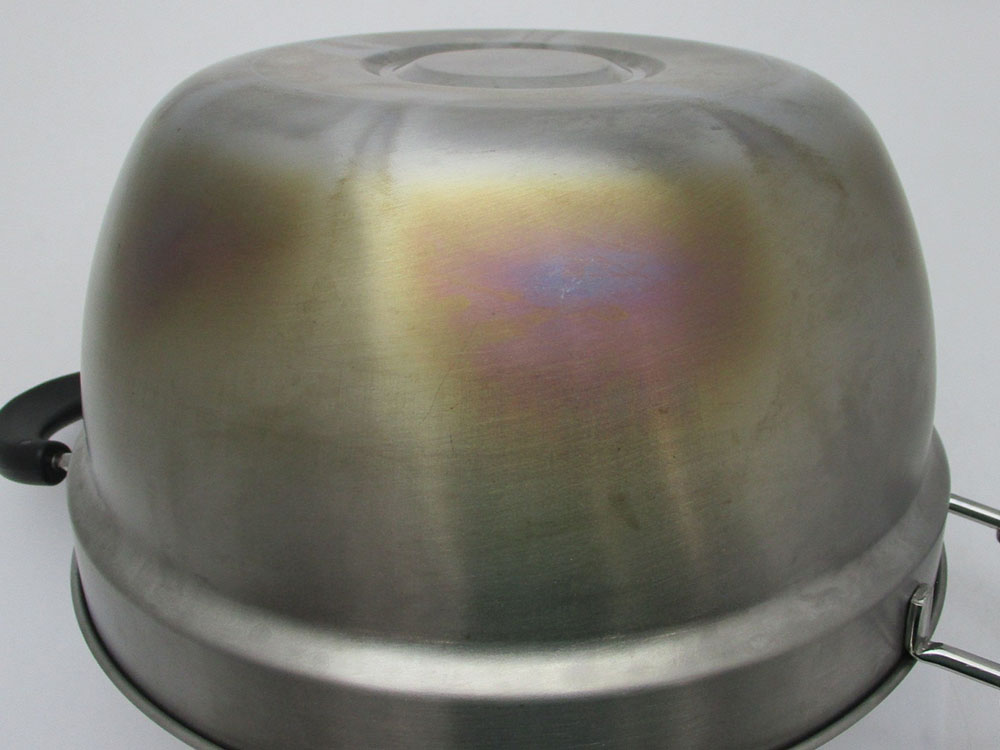
Things to Keep in Mind When Using a Stainless Steel Pot
To ensure optimal use of your stainless steel pot, please take proper care of it on a regular basis and keep the following points in mind.
Do not heat the pot while it is empty.
Dry-heating is extremely dangerous as it can cause fire, deformation of the pot, damage to the handle or knob, and even burns. Please never attempt to heat the pot while it is empty.
Do not store food in the pot after cooking.
To prevent rusting, please transfer the contents to another container promptly after cooking.

Do not use for stir-frying.
If you use the pot for stir-frying or pre-cooking ingredients, it can become excessively hot and result in a condition similar to dry-heating. This may cause oil to burn, and lead to discoloration or deformation of the bottom of the pot. We recommend performing such cooking in a frying pan first, and then transferring the ingredients to the stainless steel pot.
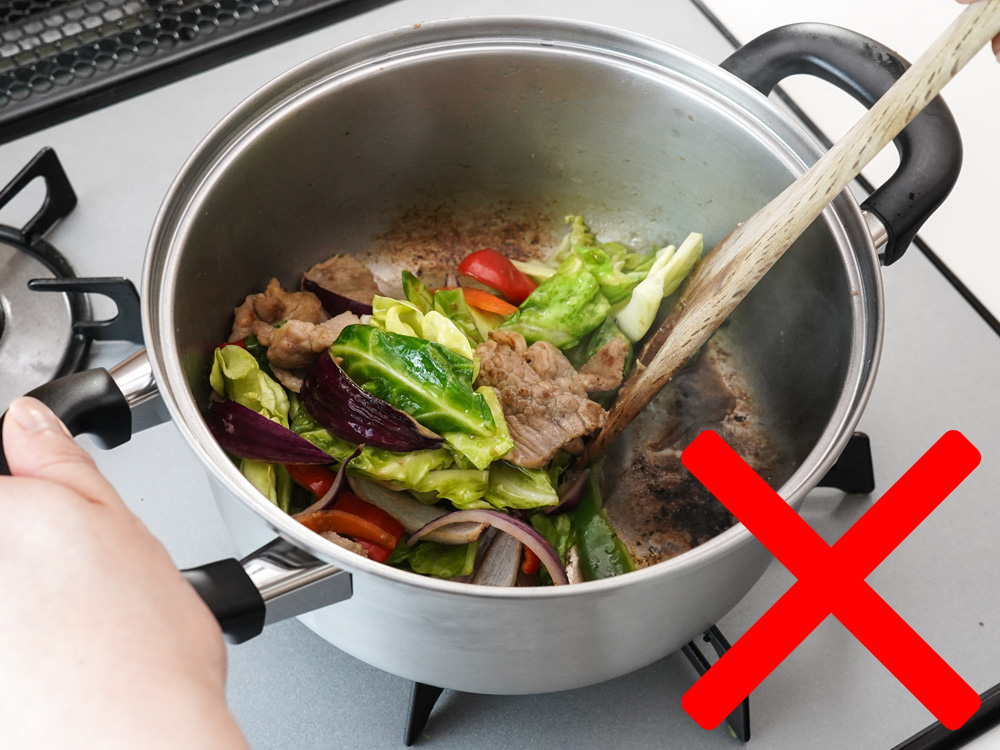
Introduction to the Stainless Steel Pot recommended by Wahei Freiz.
We will introduce our recommended Stainless Steel Pot.
ENZO IH stainless pot 20cm
ENZO’s single- and double-handled pots, which can be selected to suit the number of people or the menu, are made slightly thicker. Their durability means the more you use them, the more you'll appreciate their quality.

